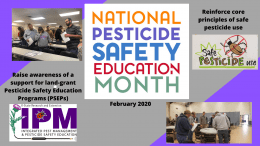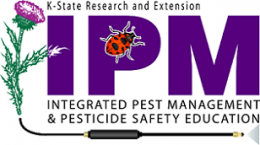By: Frannie Miller

Did you know there are about 1 million certified pesticide applicators in the United States? There is somewhere between 11,000 to 15,000 pesticide products registered for use in each state. Common consumer products that contain pesticides include flea collars, weed and feed, and roach baits. Pesticides play an important role in improving the quality of food and feed yields. They also protect the public health, controlling pests in our homes, turf, forests, waterways, and right-of-way.
February is National Pesticide Safety Education Month, which is important in raising awareness and support for land-grant Pesticide Safety Education Programs (PSEP). Pesticide Safety Educations Programs like the one at Kansas State University deliver pesticide applicator trainings on safe use of pesticides in various settings, as well as deal with state-specific needs and laws.
Have you ever wondered how safe you are when using pesticides? You can take a self-assessment of personal pesticide safety practices to evaluate where you could do better:


